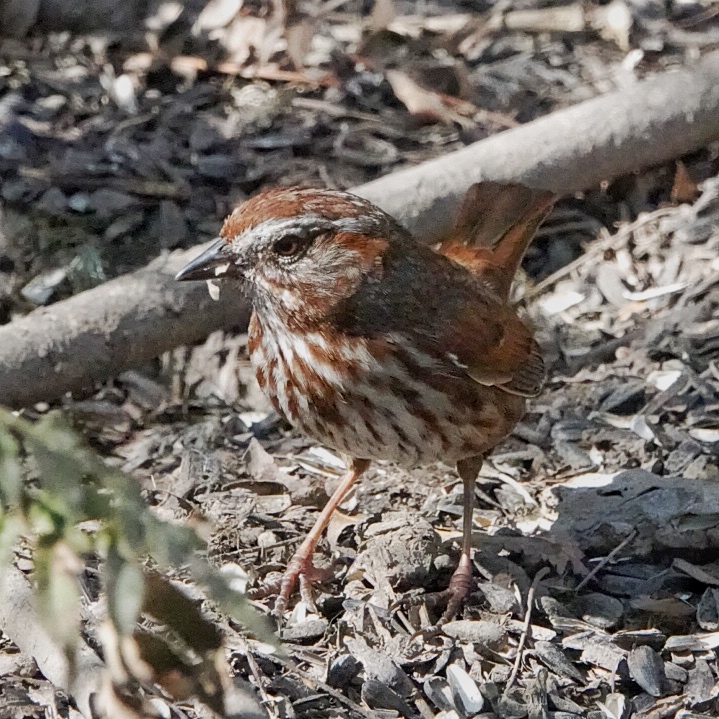
A dozen or so years ago, when I was a beginning birder, I really struggled with identifying the sparrows (and even today there are only a half dozen I can identify without recourse to a guidebook). One day I was walking in a local park and I spotted a bird with a spot in the center of its streaked breast, and grey eyebrows. It surprised me by remaining atop its perch as I approached, until I could see it very clearly and in detail without the aid of the binoculars. Finally I said, with a sense of wonder that led to whimsy, ‘Are you a Song Sparrow?’ And that bird burst into song, as if in an affirmative reply, which caused me to burst into laughter. I think of that as my first sparrow identification.
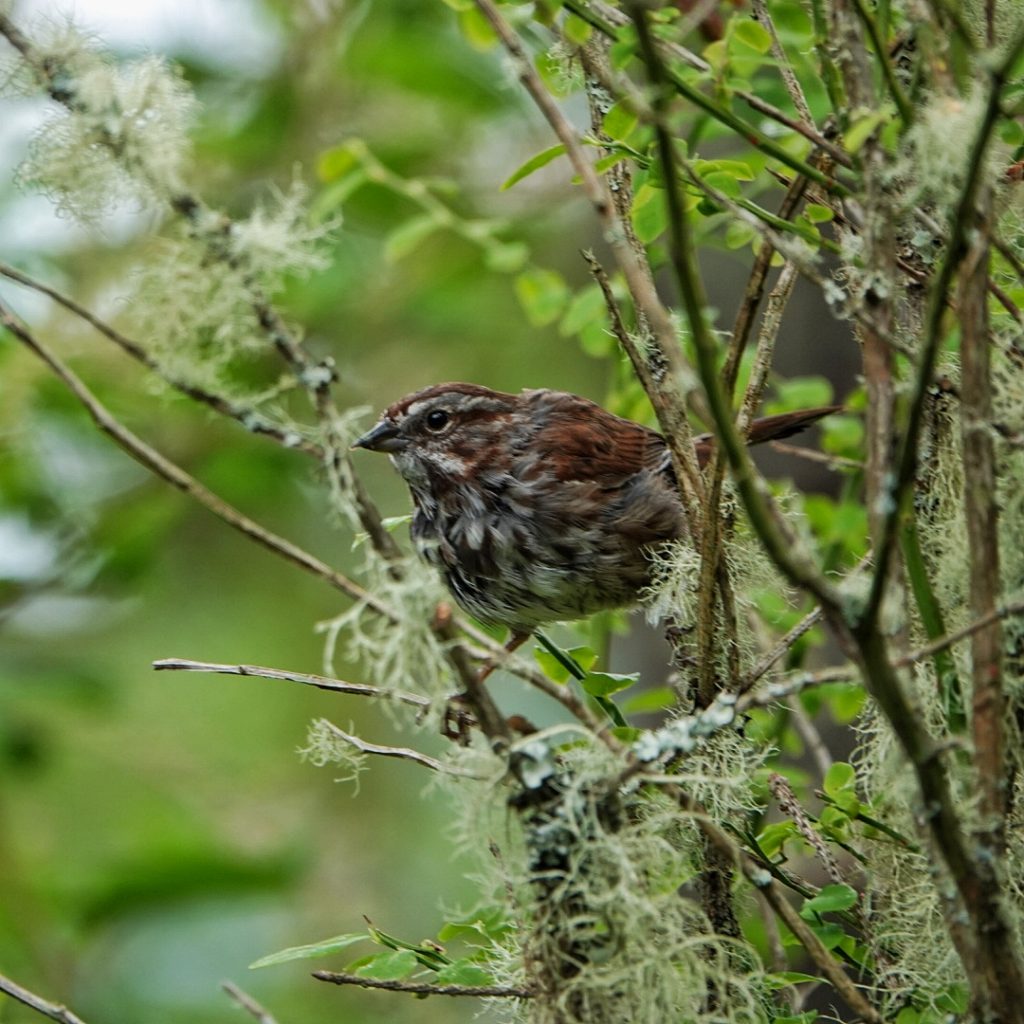
Having seen thousands of Song Sparrows since then, I realize that it wasn’t at all surprising that it allowed me to approach closely. Song Sparrows are as little concerned and tolerant of random humans as any bird species I encounter. They also occupy more niches than any other bird I can think of. I’ve seen them gleaning tree branches, hawking, scratching in dirt, poking about in wetlands mud, and a host of other behaviors in a plethora of habitats. About the only place I don’t find them is in deep woods, but they are probably there along roads, streams, and other open areas.They also seem to be mostly solitary. I have seen them in mixed foraging flocks, mostly with Golden-crowned Sparrows, but to the best of my recollection I have never seen a flock of Song Sparrows.
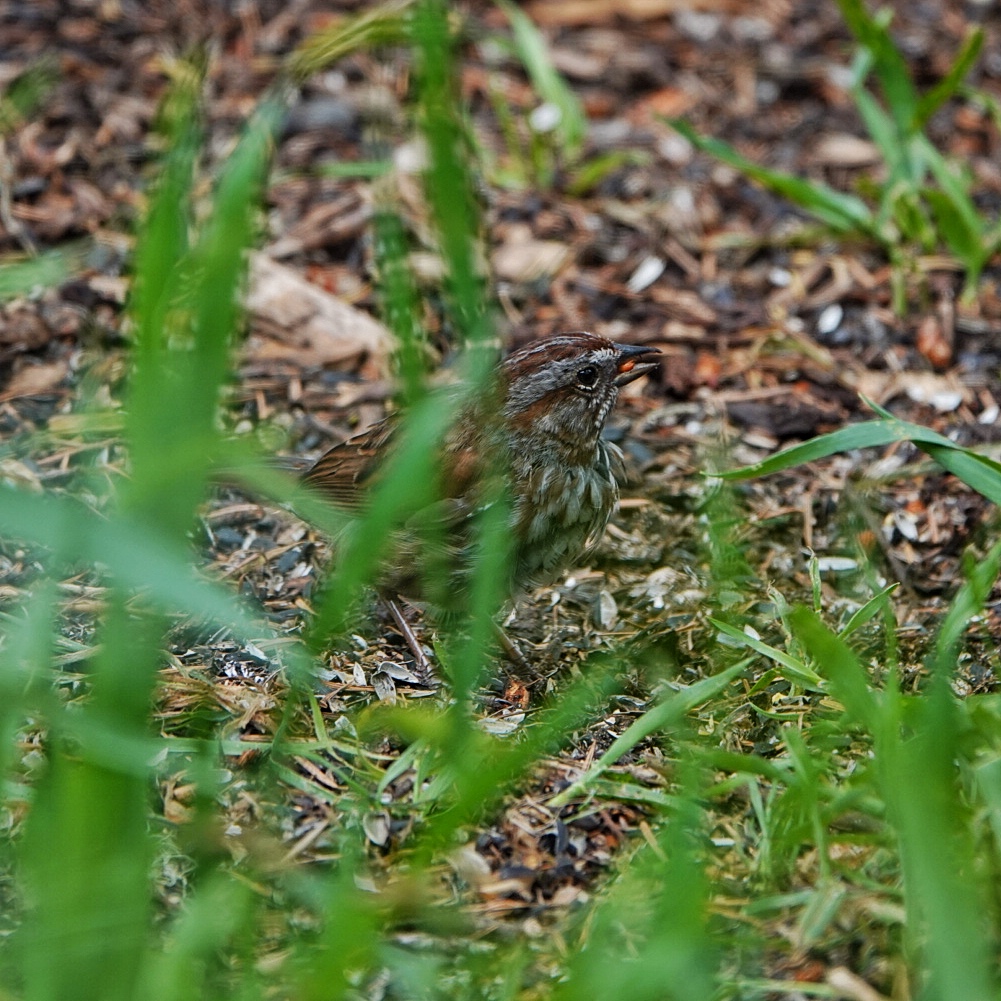
Male Song Sparrows can have up to 12 different songs, and because they repeat each one from a few to dozens of times (each set of repetitions is called a bout) their whole ‘playlist’ can take up to thirty minute to sing, and they seldom go back to a particular song until they’ve sung the whole repertoire. It had been noted that they varied their playlists and the length of the bouts, with greater complexity being assumed to have some mating benefit. Don’t want the ladies getting bored, and all that. But it was not known how, and to what extent, the repertoire was varied.

Recently an extensive study (Searcy et al; 2022) showed that each bird adjusts the length of the bouts based on previous numbers, with greater repetition in a previous bout leading to fewer in the next one, and vice versa, as well as having a long delay between long bouts. They also cycle through their playlist in varying order, and sing some songs more than others. This means that they remember what they sang 20-30 minutes ago (in language theory terminology the whole process is called ‘long distance dependencies), and adjust the present set accordingly, although by what logic is not completely clear. What is truly groundbreaking about this is that the previous record for long distance dependency in birdsong was held by some Belgian canaries, who could remember what they sang 5 seconds ago, rather than 20-30 minutes.

Song Sparrows were also the subject of what the noted ethologist Konrad Lorenz called “…the first long-term field investigation of the individual life of any free-living wild animal”. This was conducted by Margaret Morse Nice who, from 1929-37, trapped and banded 870 Song Sparrows near her home in Columbus, Ohio, closely following 336 of them. Nice (who had previously written ‘The Birds of Oklahoma’ during her time in that state) was motivated to do this because she discovered that there was much misinformation masquerading as fact regarding the natural history of many birds.
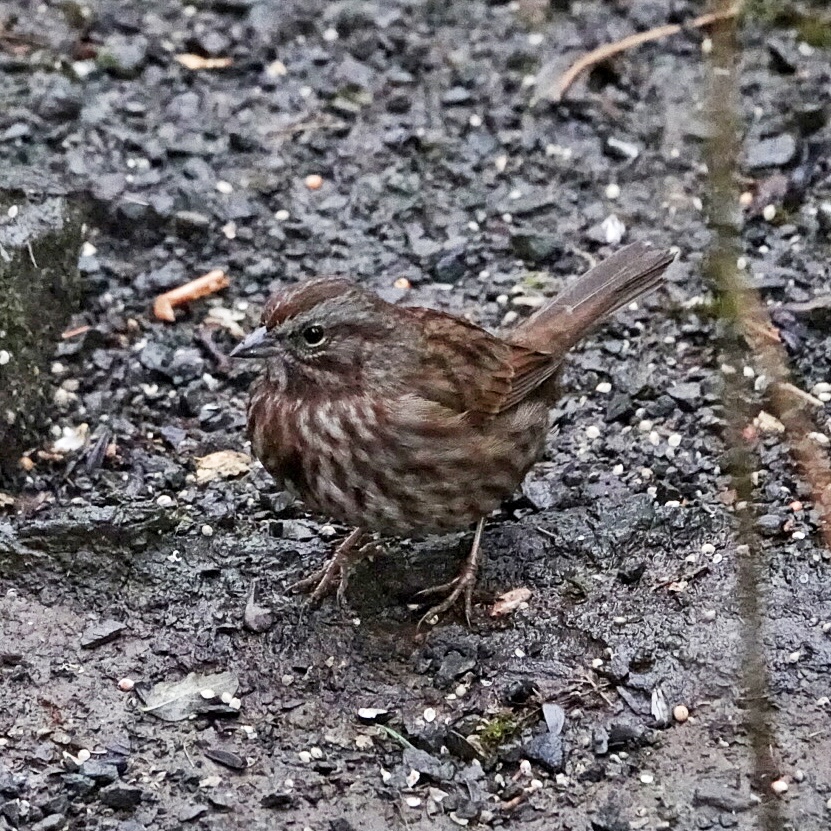
A case in point was that the opinions on egg incubation by a 19th century writer named Major Binder were given great weight, but that he had gotten his ‘facts’ from the writings of Aristotle, who had merely extrapolated from his observations of domestic waterfowl. Just goes to show that the conflict between hearsay and facts didn’t start with the Internet. Margaret Morse Nice went on to write three books about her studies, The Watcher at the Nest (1939) and ‘The Behavior of the Song Sparrow’ and ‘Studies in the life history of the Song Sparrow’ as well as several other books, and over 200 papers and articles.
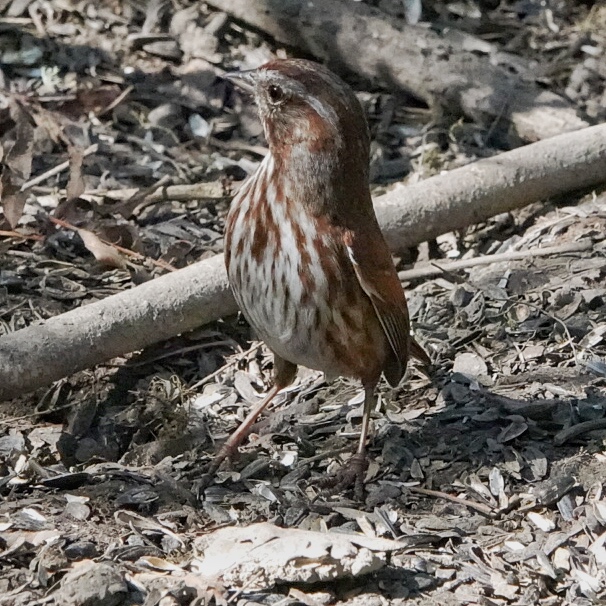
Description-Medium sized (5-6”tall) stocky, reddish brown sparrow with a broadly streaked breast that has a dark, smudged, central spot; grey eyebrows and brownish red crown; greyish bill and somewhat flattened head; Song Sparrows have a wide variation of plumage, tending towards being overall darker in color in wetter climates, but they always have the heavily streaked breast with a central spot, and grey eyebrows.
Similar species-Fox Sparrow has blotched or spotted rather than streaked breast, darker red on the back, yellowish bill, more domed head, eyebrow less distinct or absent, lacks dark line through eye; Lincoln’s Sparrow has finer streaks on a more tan breast, lacks breast spot, and is overall more tan; Savannah Sparrow has finer streaking, yellow eyebrow, overall tan color.
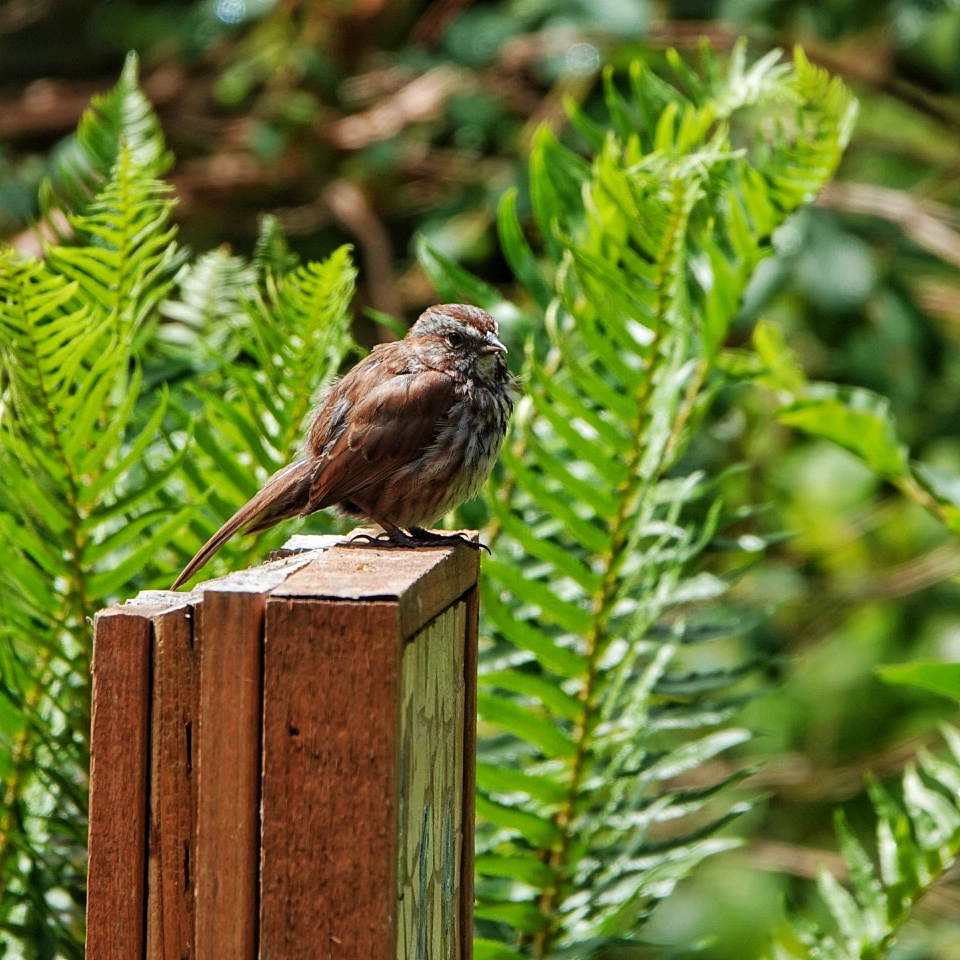
Habitat-Fields, wetlands, openings in forests and woodlands, open areas, and just about any other place you can think of that isn’t deep forest, barren and coverless desert, or mountain peaks.
Range-Native; can be found throughout North America, except for the Arctic; region wide, except for alpine areas, and the most arid parts of the interior.
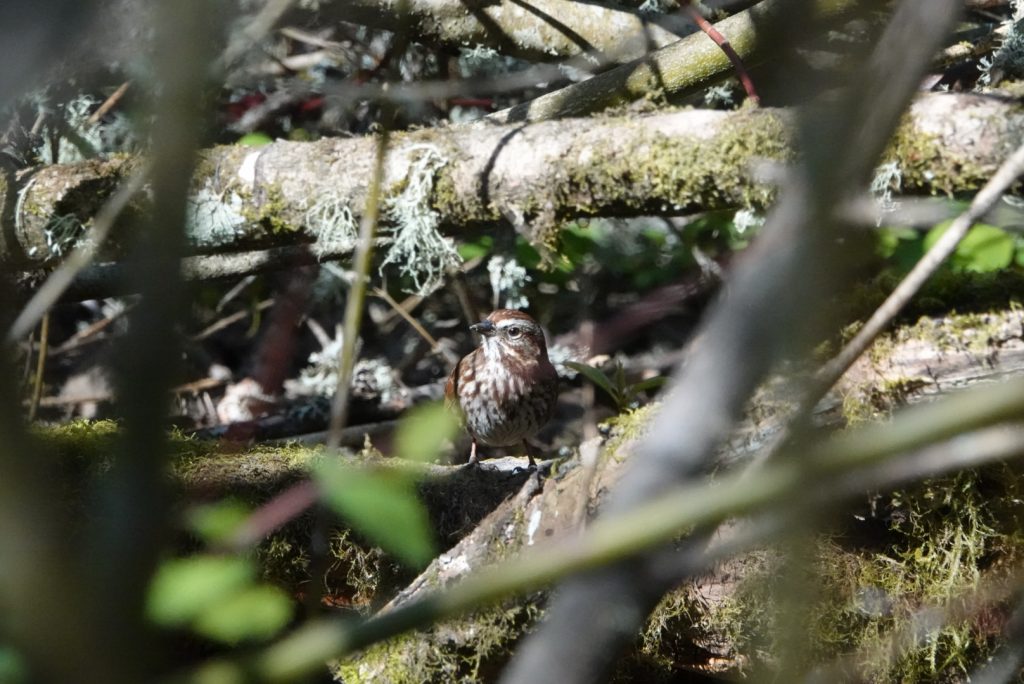
Eats-Wide range of insects, other arthropods, as well as small gastropods and other mollusks, particularly in salt marshes; eats seeds from grasses, weeds, and forbs, and some fruit; eats mostly invertebrates during summer, especially when rearing young, and relies mostly on seeds during winter; will come to feeders, although it usually feeds on the ground or on platforms.
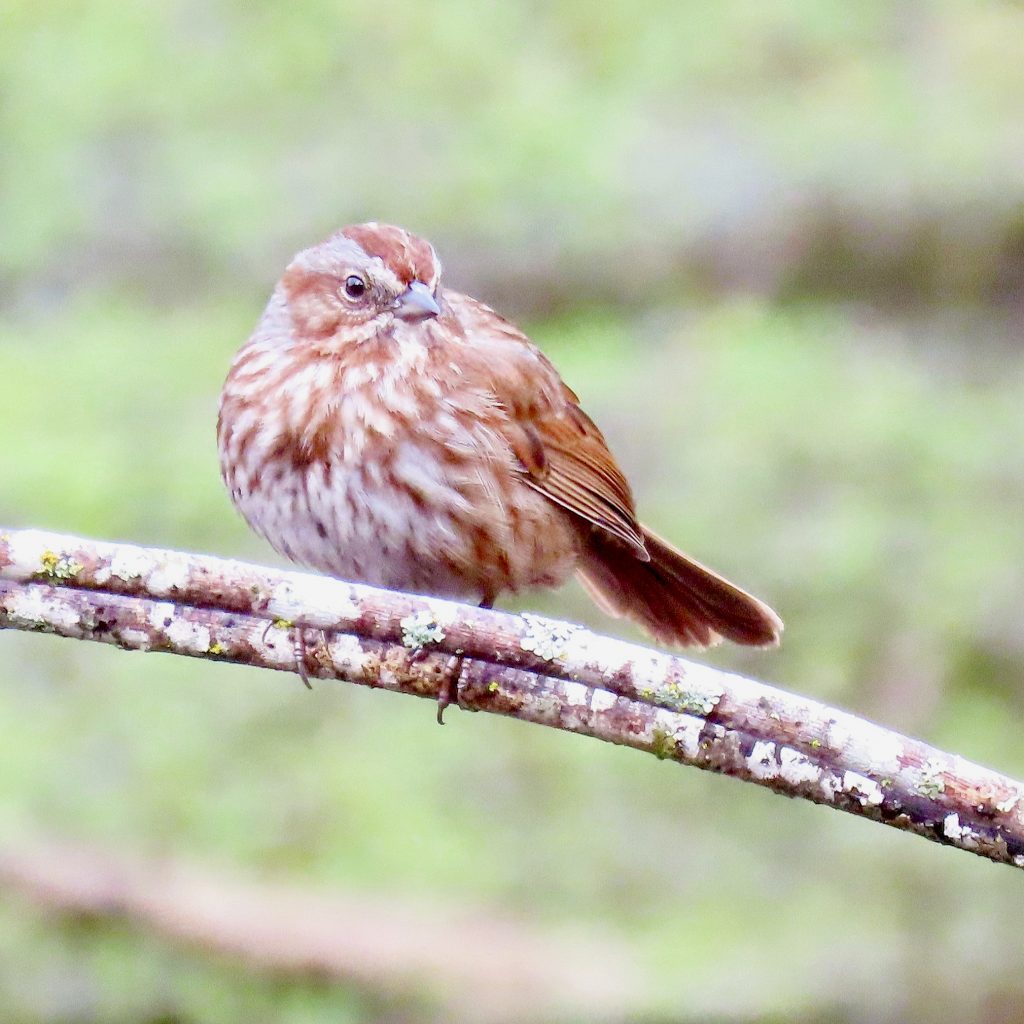
Eaten by-Coopers Hawks, Sharp-shinned Hawks, Merlins, Kestrels, Pergrine Falcons, Western Screech Owls, Northern Pygmy Owls, Northern Saw-whet Owls, as well as other hawks and owls; Crows, Scrub Jays, and other corvids will attack eggs and chicks in nests, as will raccoons, skunks, opossums, weasels, and many other carnivores.
Adults active-Year around; most Song Sparrows that breed in our region are not migratory, but migratory Song Sparrows do pass through the PNW in spring and fall.
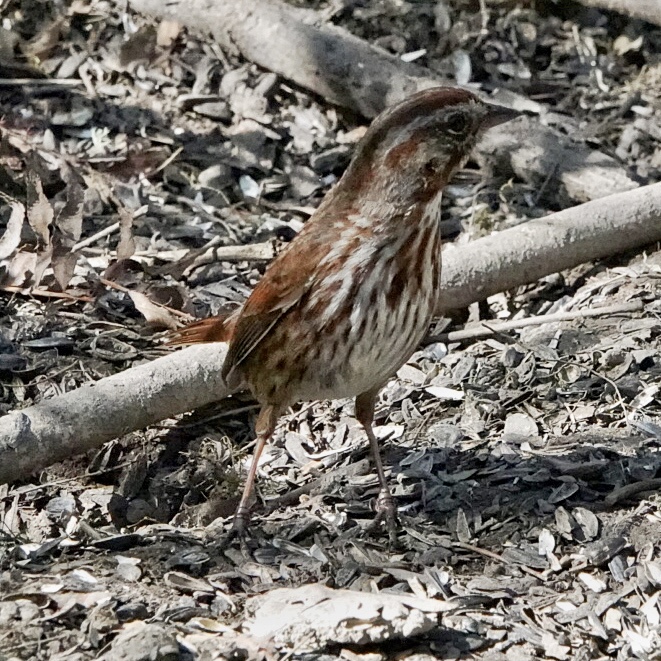
Life cycle-Builds a cup-shaped nest in open, shrubby areas, either on, or within 4’ of, the ground, which contains (2)3-4(6) pale blue to green eggs with reddish brown markings; has two broods under most conditions, but has been known to raise 4 under optimal conditions; incubation lasts 12-14 days and is done by the female; chicks altricial rather than precocious, fledge in 9-12 days, but stay with parents for up to 3 more weeks; both parents feed the young, though sometimes the male will take over feeding near the time for fledging, while its mate constructs a new nest; common host for the brood parasitism of Brown-headed Cowbirds; often nests near previous year’s nest sites; lifespan may be as much as 11 years.
Etymology of names–Melospiza is from the Greek words for ‘song finch’. The specific epithet melodia is also from the Greek word for song, or more specifically, melody.

https://www.allaboutbirds.org/guide/Song_Sparrow/overview
https://today.duke.edu/2022/01/birds-shuffle-and-repeat-their-tunes-keep-audience-listening
https://royalsocietypublishing.org/doi/10.1098/rspb.2021.2473
https://www.birdweb.org/birdweb/bird/song_sparrow
https://www.audubon.org/field-guide/bird/song-sparrow
v.4 (1937) – Transactions of the Linnaean Society of New York. – Biodiversity Heritage Library
v.6 (1943) – Transactions of the Linnaean Society of New York. – Biodiversity Heritage Library
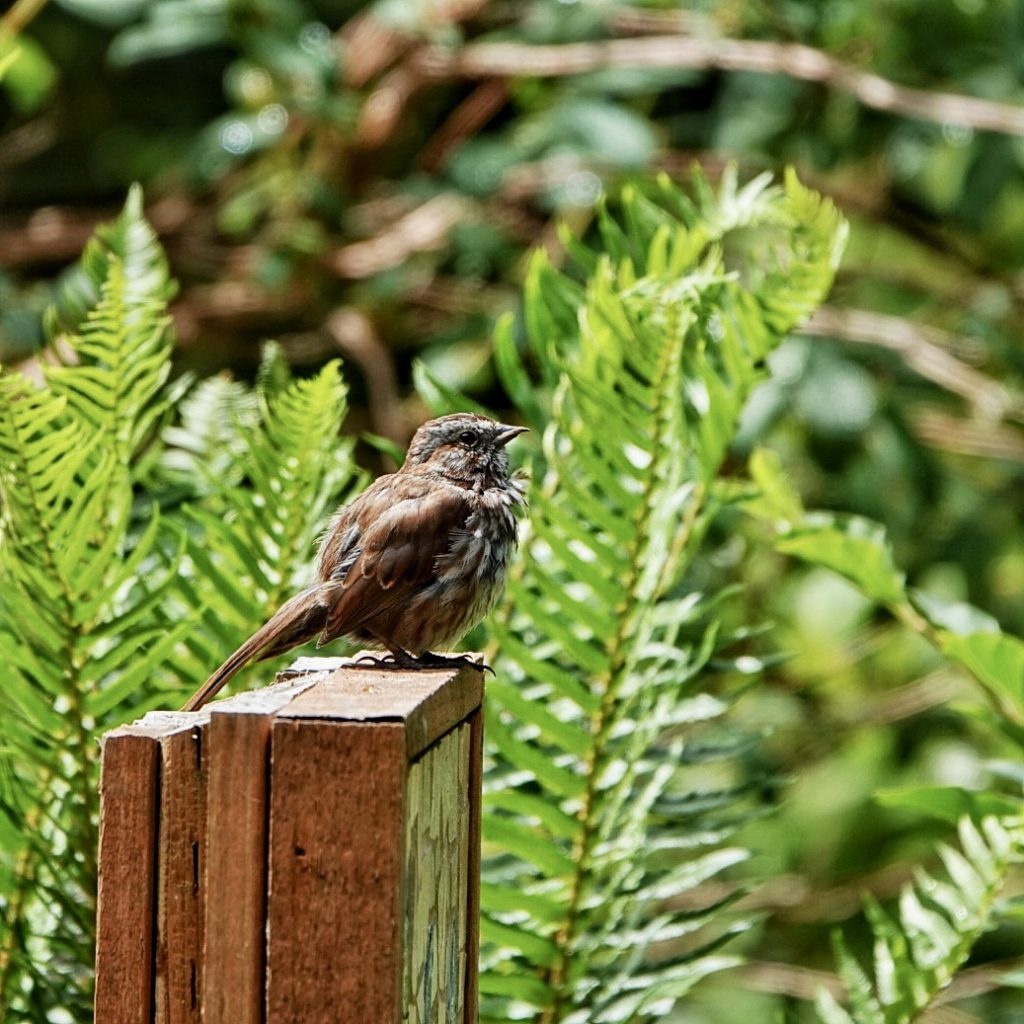
I LOVE your opening paragraph!
Thank you, Trevor!
I have been marvelling at this old favorite a lot this winter too. Thanks for this post. Love your observations.
Thanks Bonnie!
I tried almost everything to keep a male song sparrow from messing up the side of my car a few years ago. He would perch and fight with the side view mirrors, so I put plastic bags on them. Then, he moved on to the side windows and started fighting with his reflection there. I covered those with magnetic car covers, which didn’t work, because he simply moved on to the windshield and the top of the hood. Next, I draped a painter’s tarp over the front half of the car. He just flew up underneath and continued fighting with the side windows. Finally, I bought a cheapo hand mirror, taped it to a post, added a perch, and voila! Within a few days, he had transferred all of his aggression to that while I was at work. This went on for well over a month. Amazing how persistent they can be.
I’ve heard of that with robins, but never before with Song Sparrows. Clever solution! Thanks for sharing that!